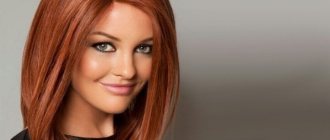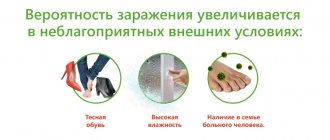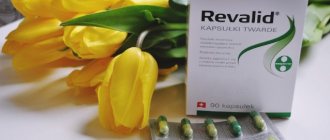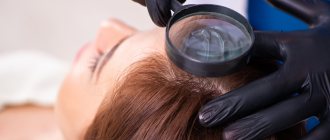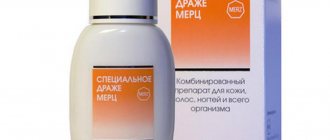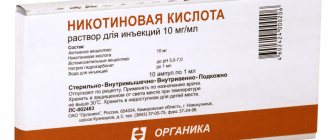Minoxidil is a drug for the treatment of alopecia (pathological hair loss) in men and women. The medicine promotes vasodilation and, when applied to the scalp, stimulates active hair growth. The product not only restores hair, but also prevents your hair from falling out. The substance is produced in the form of a spray, aerosol, solution and foam. Minoxidil for hair is actively used in cosmetology clinics and, according to reviews from clients who have tried the drug, it gives good results.
Minoxidil
Minoxidil is a hair drug that is a vasodilator that effectively stops hair loss and increases the growth rate of new hair shafts. Minoxidil, for example, is the main component of the drug "Rogaine" or "Regaine", which is actively used to get rid of androgenetic alopecia and treat hair growth. Among the drugs that also include Minoxidil are eucapil, procopil, and alerana. It is used as an additive by many cosmetic lines that produce shampoos to strengthen hair.
Minoxidil directly affects hair follicles, activates cell nutrition by dilating blood vessels and improving blood flow. For ease of use, Rogaine is available in the form of a spray and hair foam.
Minoxidil is actively used to treat hair loss in women. Correctly, a drug with a 2% concentration is used. In turn, “Regaine” for men has a 5% percentage solution concentration. The product is especially effective in the initial stages of hair loss with aggressive processes, and gives less pronounced results with a large area of baldness.
Efficacy of minoxidil
The benefit of the drug depends on the following characteristics:
|
|
When using the medicine, the following results can be obtained:
- hair stops falling out intensively;
- New hair grows in place of lost hair;
- Along with hair growth, the volume and quality of the hairline increases.
Minoxidil is also actively used to treat beard alopecia.
Features of application
The mechanism of action of Minoxidil is such that hair density is visually restored with regular, long-term use. If we talk about the frequency of use, then Rogaine should be used twice a day. The first tangible results can be detected after 2-3 months of use.
Rogaine has an intensive effect on the hair follicles, but does not remove the causes of androgenetic alopecia, which are the unfavorable, damaging effects of testosterone breakdown products on the hair follicles. If you stop using the drug, the hair becomes so thin that it takes on the appearance of a light fluff. As a result, a bald spot is formed. That is why it is not recommended to stop using the product.
The effectiveness of Minoxidil for hair treatment is proven by numerous reviews from both patients and attending physicians. For example, 30% of patients who used Rogaine experienced complete cessation of hair loss and restoration of hair thickness. To achieve similar results, you need to use Rogaine for 1 year or more, taking into account the nature and intensity of the problem.
FAQ
Can Minoxidil be harmful to your health?
The drug has side effects, which include:
|
|
Allergies may occur, as well as a negative reaction of the cardiovascular system in the form of dizziness, increased heart rate, and chest pain.
Can I use the medicine for life?
When treating with minoxidil, trichologists use a standard regimen with a limited concentration of the drug. The more concentrated the drug, the more carefully you need to use it. After 2-3 years of use, the drug can cause the opposite result - hair loss, because... the principle of its action is to dilate blood vessels, which cannot be stimulated constantly.
Minoxidil should be used in courses, the solution should be applied in accordance with the schedule drawn up by a trichologist. At the same time, the likelihood that addiction will develop or negative side reactions will appear is much lower than with independent use.
Side effects
The drug Minoxidil, according to the manufacturer's instructions, is recommended to be used continuously to stop hair loss, activate hair growth, and get rid of baldness. If treatment is interrupted, new hair that has grown after starting to use the product will begin to fall out within 3-6 months.
For better and faster results, Minoxidil can be used in conjunction with other hair restoration products, for example, massages, hair loss masks and special medications.
Minoxidil is well tolerated, but has some side effects:
- burning, itching of the eyes;
- hives, rash;
- swelling;
- tachycardia;
- dizziness;
- labored breathing;
- dandruff, up to the appearance of seborrhea and seborrheic plaques.
If negative consequences occur after taking the drug, you should immediately see a trichologist.
The emergence of minoxidil
The medicine appeared in the mid-20th century as a remedy for stomach ulcers. But it turned out to be ineffective in combating this disease. Among its properties, scientists discovered vasodilation, so minoxidil began to be used to lower blood pressure.
An unexpected side effect was the active growth of hair, an increase in its thickness and strength. In the 80s of the 20th century, this property began to be used in the cosmetic industry to treat baldness.
Correct use of the medicine makes it possible to strengthen existing hair and restore lost hair. Thanks to active blood circulation, the body receives nutrition and removes processed substances at an accelerated pace. Today, minoxidil for hair is a fairly popular remedy in the fight against various types of alopecia.
Finasteride
Another effective treatment for alopecia is the drug Finasteride (or Propecia). Finasteride is specifically formulated for the treatment of hair in men, including the treatment of male pattern baldness. This is the only specialized treatment for androgenetic alopecia that effectively helps stop hair loss.
Instructions for use of Finasteride:
- The drug is used to reduce the size of the prostate gland and treat baldness.
- The drug is taken once a day, 5 mg. Finasteride can be used as a single drug for the treatment of hair loss, or in combination with other special medications, for example, Minoxidil. Eating does not affect medication intake.
- The drug should not be used in case of liver failure.
Myth No. 3 Dangerous to health
The truth is that any drug can have side effects. All unwanted reactions that may occur when using it can be divided into 2 groups. The first is local reactions that occur when it is used externally, but are associated not with the active substance itself, but with the solvent in the composition of lotions and creams - propylene glycol.
Propylene glycol is a dihydric alcohol, the best solvent that can cause contact dermatitis with prolonged use. In a number of products, the concentration of propylene glycol is now reduced; propylene glycol is replaced with ethanol, which is a less allergenic component.
The second group of reactions is associated with the undesirable effects of minoxidil: increased hair growth on the face and limbs, an allergic reaction to the component itself, palpitations and swelling of the face. Typically, these reactions are not frequent, occur in no more than 10% of patients, and are associated with high concentrations.
Advantages of Finasteride in the treatment of hair loss
- Reviews about Finasteride are positive. The drug leads to a quick stop of hair loss. This has been proven by millions of men who have used the drug to treat alopecia for several years.
- The product is suitable for monotherapy and for use in combination with other drugs. Finasteride is most active in the initial stages of hair loss, and produces less pronounced results as alopecia progresses. A good effect is achieved if you use the product after hair transplantation.
- Finasteride, reviews of which indicate its maximum effectiveness, leads to a reduction in testosterone activity in the hair.
Contraindications
The use of minoxidil is prohibited:
- if you are allergic to the medicine itself or its components;
- if the patient is a minor;
- if a woman is pregnant or breastfeeding;
- for cuts, scratches, head wounds;
- when using substances that are incompatible with the drug.
Since the drug has a number of contraindications, it is advisable to use it under the supervision of a trichologist. Self-prescribing medication can lead to negative consequences.
Norm
Hair consists of two parts - the shaft and the root. The hair root is immersed in the skin and is located in a special recess. The hair root and the depression in the skin are called together the hair follicle or hair follicle. A person has 100,000-150,000 follicles on his head. This is where hair growth occurs. There are three stages of hair growth:
- Growth phase.
- Degradation phase, the hair follicle freezes. Duration of the phase: 3-4 weeks.
- Rest phase. The hair separates from the root, begins to move towards the surface and then falls out. After this, preparation for the growth of new hair occurs. The duration of the period is 2-4 months. Normal phase 3 hair loss is 50-80 hairs per day.
Within normal limits, approximately 80-90% of hair is in the growth phase, 1-2% in the degradation phase and about 10-15% in the resting phase.
The hair follicle does not exist separately; it is surrounded by skin, blood vessels, and nerves. Their correct operation ensures its functioning. If there is a failure somewhere, it can affect hair growth.
Everything in our body is interconnected, so any violation can directly affect the growth and condition of hair.
Minoxidil (2,4-pyrimidinodiamine-6-(1-piperidinyl)-3-oxide) - white powder, soluble in water, propylene glycol and ethanol - is a vasodilator antihypertensive agent that, when applied topically, can slow or stop hair loss and stimulate new hair growth .
The era of minoxidil did not begin with the discovery of its unique property of stimulating hair growth. The drug began to be used in the mid-50s of the 20th century as a regenerating agent in the treatment of gastric ulcers. Much later, after long-term studies aimed at studying the hemodynamic effects of minoxidil in patients with hypertension, an inexorable side effect in the form of hypertrichosis, including on balding areas of the scalp, forced researchers to seriously study the “side” phenomenon. The topical use of minoxidil on the scalp for the first time made it possible to realize a person’s long-standing dream - the ability to stimulate hair growth.
How it works?
Studies of the effects of minoxidil have shown that the relaxing effect on vascular smooth muscle occurs through the opening of potassium channels (KATP), which are sensitive to ATP [1, 2]. KATP are widely present in cells of various tissues, including cells of the myocardium, pancreas, vascular smooth muscle and the central nervous system, where they mediate between intracellular metabolic changes and the electrical activity of the cell membrane [3]. Potassium channels detect metabolic changes in the cell: at high energy levels, ATP cells inhibit the opening of potassium channels; in the event of depletion of energy reserves, they open [4]. KATP cell sites are heteromultimers constructed from a small subunit of the potassium channel family and a large sulfonylurea receptor (SUR1, SUR2A, or SUR2B) that binds sulfonylureas and ATP. The potassium channel opener exerts its activity by binding to sulfonylurea receptors [5].
In 2001, M. Li et al. [6] reported that human dermal papillae cells induce mRNA expression for the same sulfonylurea receptor SUR2B that undergoes expression in vascular smooth muscle cells. During the reverse transcriptase polymerase chain reaction, the authors discovered mRNA for the adenosine receptors A1, A2A, A2 B, as well as the sulfonylurea receptor SUR2B. It was found that adenosine also causes increased release of the signaling protein vascular endothelial growth factor (VEGF), and the VEGF response to minoxidil is absent after pharmacological blockade of adenosine A1 and A2 receptors. The authors suggested that the binding of minoxidil to the sulfonylurea receptor stimulates the release of ATP, which is rapidly converted to adenosine and activates adenosine metabolic signaling pathways. Thus, one possible mechanism for minoxidil stimulation of VEGF has been proposed [6].
VEGF is a homodimeric highly glycated protein, mitogenic only for endothelial cells; its level increases in tissues where angiogenesis is actively occurring; at this time, expression of its receptors is observed on target endothelial cells in nearby blood vessels [7]. The angiogenic factor VEGF has recently been recognized as the main mediator of the growth and cyclic functioning of the hair follicle (HF) [8]. VEGF is found in keratinocytes of the external epidermal root sheath (NEVC) and in fibroblasts of the hair papilla [9–11]. The early stages of anagen are accompanied by increased expression of VEGF and restoration of vascularization of the dermal papilla of the follicle [8]. Therefore, one of the likely reasons for the stimulation of hair growth by minoxidil is its activation of VEGF.
However, there are individual differences in the severity of the hypotensive effect of minoxidil, its relaxing effect on smooth muscles and on hair restoration.
Sulfated minoxidil.
The effect of rapid relaxation of vascular smooth muscles is exerted by the sulfonated metabolite of minoxidil - minoxidil sulfate [12, 13], which is 10-15 times more effective than minoxidil. The conversion of minoxidil to minoxidil sulfate is catalyzed by sulfotransferase enzymes. Minoxidil sulfotransferase activity was found in homogenates of rat and human liver, platelets, vibrissae follicles of mice and rats, in their epidermal keratinocytes and epithelial hair root sheath, and in the HF - in the scalp of short-tailed macaques [12, 14-20].
To date, five cytosolic sulfotransferase genes have been discovered in humans, which encode three classes of enzymes responsible for the sulfonation of phenols, catecholamines, estrogens and hydroxysteroids. Moreover, mRNA expression for four sulfotransferases was detected in human epidermal keratinocytes [21]. In the outer shell of the VF root, the conversion of minoxidil into the active form of minoxidil sulfate occurs with the help of endogenous sulfotransferase enzymes [22–24]. Interesting observations were made by A. Buhl et al. [25]. It turned out that sulfotransferase activity in the scalp of men who responded to minoxidil was higher than that of men who did not respond to it. Later, individual differences in the activity of sulfotransferases contained in the scalp were discovered, which correlated with their concentration in platelets [26].
Due to the long treatment time required for therapeutic response (6 months), coupled with the variable efficacy of minoxidil in the general patient population, the ability to predict treatment response by first detecting the biomarker sulfotransferase in the human scalp is highly relevant.
A colorimetric assay method for detecting sulfotransferase activity in epilated human hair was proposed by A. Goren et al. [27]. The reaction of minoxidil to minoxidil sulfate was coupled to the production of paranitrophenol, which could be quantified by optical absorption at 405 nm. The study found a correlation between sulfotransferase activity in epilated hair and response to minoxidil in a mixed cohort of male and female patients. The analysis showed 95% sensitivity and 73% specificity for predicting response to minoxidil treatment for androgenetic alopecia. A further study of the effectiveness of predicting response to treatment with minoxidil in a well-defined group was carried out by J. Roberts et al. [28]. Female patients with androgenetic alopecia (AGA) used minoxidil 5%. The authors obtained similar results: the ability to predict the effectiveness of treatment with 5% minoxidil in women with a sensitivity of 93% and specificity of 83% ( p
<0,005).
Unfortunately, at present this type of examination is not included in the range of screening tests when examining patients with AGA. However, in the future, its introduction into the patient examination algorithm will make it possible to differentiate treatment taking into account individual sensitivity to minoxidil.
The use of minoxidil in the treatment of androgenetic alopecia
Hair loss with androgenetic alopecia is the result of the implementation of the genetic program of certain HF cells growing in the area of the forehead, crown and crown, which can be strengthened or weakened by various external and internal influences both on HF cells and perifollicular tissues, and on the body as a whole . In this case, the basis for the development of androgenetic alopecia is the genetic sensitivity of the HF to androgens.
The effectiveness of minoxidil in relation to hair restoration in AGA has been convincingly proven in many randomized clinical trials with double-blind and placebo control, which served as the basis for considering minoxidil as a basic drug for the treatment of male and female hair loss.
In accordance with international standards for the treatment of AGA, minoxidil is prescribed externally to women and men at a concentration of 2 and 5%, respectively. To evaluate the effectiveness of treatment, at least 6 months of regular use of the lotion 2 times a day is required [29]. After topical application, minoxidil accumulates in the upper layer of the epidermis and is then gradually distributed throughout the body. The half-life after cessation of local application is 22 hours. When administered orally, the half-life is 1.5 hours. Minoxidil is excreted in the urine; 95% of minoxidil is eliminated within 4 days after application [30].
Minoxidil and ketoconazole.
Of course, the genetic sensitivity of HF to androgens is the basis for the development of androgenetic alopecia, but this does not explain some aspects associated with the development of AGA, in particular, the presence of a moderate nonspecific infiltrate in the perifollicular zone, consisting mainly of immunocompetent T-lymphocytes [31].
The cause of such inflammation may primarily be bacteria colonizing the infundibular zone of the follicle, such as Propionibacterium
spp
., Staphylococcus
spp.
, Malassezia
spp. or other participants in the transient microflora.
A group of researchers led by S. Pierard-Franchimont [32] suggested that ketoconazole (KKZ) could be studied in AGA because it is active against Malassezia
spp.
and bacteria of the genus Staphylococcus
, which are part of the microflora of the scalp.
In order to study the effect of the antimicrobial effect of 2% KKZ on the condition of AGA, comparative studies were conducted in two groups of patients who used KKZ 2% as part of shampoo, but without combination with minoxidil, and who used regular (non-medical) shampoo in combination with a solution of minoxidil 2%. The results of the study showed that hair density, size and proportion of anagen follicles were almost equally improved in both groups (treated with KKZ and treated with minoxidil), hair greasiness decreased more in the group using KKZ. Based on comparative data, the authors conclude that the effect of CCZ can have a significant impact on the course of AGA and that Malassezia
spp
.
may play a role in the inflammatory response.
Why foam?
Despite the fact that patients satisfactorily tolerate treatment with minoxidil lotion, including at a concentration of 5%, sometimes there are complaints of itching, irritation, dandruff, and local intolerance, which is most likely due to the fact that minoxidil for topical use contains propylene glycol - a potential skin irritant causing sensitization in 2.3–3.5% [33, 34]. At the same time, some patients complain about the lotion quickly running down the skin, the inability to maintain hair styling, and its rapid contamination. The need to apply lotion 2 times a day is considered by some to be impractical, which generally negatively affects user compliance and the effectiveness of therapy.
These issues of product acceptability and tolerability suggest that there is a need for minoxidil in both men and women that is formulated without propylene glycol and is more convenient to use.
The effectiveness and safety of topical minoxidil 5% foam twice daily was demonstrated in a study in men with AGA [35]. Results from a randomized, placebo-controlled, 16-week study using 5% minoxidil foam showed that 70.6% of 180 patients with AGA experienced an increase in hair growth, compared with 42.4% of 172 participants using placebo. The incidence of itching was 1.1% in the 5% minoxidil foam group, which was significantly lower than the 6% observed in an earlier study using 5% minoxidil lotion twice daily for 16 weeks [36]. Based on the results of these studies, in 2006 the US Food and Drug Administration approved 5% minoxidil foam for use in men with AGA.
In 2011, the Journal of the American Academy of Dermatology published the results of a randomized, blinded trial of 5% minoxidil foam versus 2% minoxidil lotion. The study involved 114 women with AGA aged 23-75 years: participants in group 1 used 2% minoxidil lotion 2 times a day, group 2 - 5% minoxidil foam once a day. The duration of treatment was 24 weeks. The results of the study showed that a single application of 5% minoxidil foam once a day was as effective in stimulating new hair growth as twice the application of 2% minoxidil lotion, increasing the amount of hair in the problem and surrounding areas by 16.2 at the end of the study, respectively. and 19.6% in women randomized to 5% minoxidil foam, compared with increases of 13.8 and 17.8% in the same areas in women randomized to 2% minoxidil lotion. Among other effects of 5% foam, the authors note good tolerability, rare occurrence of itching and dandruff. Reducing unpleasant side effects and other aesthetic and practical advantages is provided by the use of foam once a day [37].
Minoxidil is not a sentence, but hope
A meta-analysis of several clinical studies showed that 13-20% of patients with AGA have a moderate increase in hair growth with 2% minoxidil monotherapy. In comparison, the same meta-analysis found that 5–10% of patients taking placebo experienced similar hair regrowth [38–41]. Minoxidil 5% is also used in the treatment of female AGA. Clinical trial results suggest that 5% minoxidil has higher efficacy than 2% minoxidil, based on the average change in non-vellus hair [42]. In addition, clinical studies in men show that approximately 40% of patients experience hair growth when using 5% minoxidil [35].
In general, the use of minoxidil for AGA in some cases supports hair growth that is prone to extinction, and is especially effective in the early stages of baldness. In the absence of such a powerful external stimulus as minoxidil, the sensitive follicle is unlikely to retain the ability to regularly convert the spinous hair shaft. The cessation of the functional activity of the follicle inexorably leads to its morphological degradation: reduction and subsequent fibrosis. That is why regular use of minoxidil is an optimistic circumstance, as it helps maintain hair thickness, including those whose growth would be impossible without minoxidil. Termination of treatment - voluntary or forced - will not lead to irreversible hair loss in AGA, but will only return it to independent physiological decline - to inevitable regression, since the program of accelerated aging embedded in the genes of sensitive follicles was not stopped, but only slowed down move. And while science cannot change the vector of this program, until new drugs and technologies appear that make it possible to grow a de
novo
or replenish the potential of HF stem cells, minoxidil will be an affordable drug that can support hair growth in AGA in patients with high sulfotransferase activity in cells of hair follicles.
There is no conflict of interest.
How to find a cheap analogue of an expensive medicine
It is better to buy cheap analogues of expensive medicines in pharmacies or on trusted websites on the Internet. Unfortunately, on store shelves you can often find a counterfeit drug that will not have the desired effect.
You should look for an analogue based on the main active ingredient. The composition of the expensive drug and the generic must be identical, only in this case the drug can have an effect. If the analog contains a different dosage or contains other excipients, it is better to find out in advance about their effect on the scalp and body in order to avoid negative health consequences.
Composition and release form
The drug is available from the pharmacy in the form of a finely granulated, odorless powder. It dissolves well in any liquid - propylene glycol, ethyl alcohol, methanol, water. It is also produced in the form of a solution with various concentrations of 2%, 5% and 15%, in the form of spray, foam and tablets for oral administration.
The active ingredient is minoxidil.
The solution has additional components: pure water, alcohol and propylene glycol.
You can purchase the medicine without a doctor's prescription.
Minoxidil and its analogues
Modern manufacturers offer a lot of drugs based on minoxidil. Among them, the following have proven themselves to be excellent:
- Kirkland Minoxidil – 5% lotion with classic composition or foam;
- Rogaine – 2 or 5% standard lotion or foam that does not contain propylene glycol;
- Lipogaine – lotion with 2 or 5% concentration of minoxidil, vitamins and natural ingredients that block DHT;
- Lipogaine Sensitive - products without propylene glycol, with vitamins and plant extracts, recommended for patients with sensitive skin;
- Polaris Research – a solution with 5, 12, 15 or 16% content of the main component and a complex of excipients (antioxidants, natural DHT blockers, vitamins, minerals, etc.);
- Foligain – 2 or 5% preparations in the form of lotion or foam, contain a complex of vitamins and herbal ingredients;
- DualGen 5, 10, 15% (including formulations without propylene glycol) – with retinol and azelaic acid (DHT blocker);
- Equate Minoxidil 2% – a remedy for the treatment of androgenetic alopecia in women;
- Azelofein 2 or 3.5% – lotion with additional caffeine and azelaic acid;
- Spectral – 2 or 5% sprays and lotions with a rich complex of active ingredients;
- Serum "Sunlight" with 3% content of active substance - a Russian analogue of imported products;
- Essengen 5 or 6% - products with the additional inclusion of finasteride, a powerful DHT blocker;
- Ideal Image Solution 15% is a strong drug with a combination of minoxidil and azelaic acid.
to content ⤻
Dear analogues
More expensive substitutes for Canadian Minoxidil are Azelopheine and Azelomax. The average price is from 1,800 rubles. Produced in the USA pharmacologically, they are used to treat diffuse baldness and androgenic alopecia. The difference between these two drugs is only in the dosage. Azelomax contains a higher concentration of minoxidil - 3.5%, therefore it is more suitable for the treatment of male alopecia. Azelopheine contains only 2% and is intended for the treatment of moderate to mild hair loss.
An effective substitute is Minoxidil Inteli, which costs from 1,000 rubles. The drug is available in a Spanish form for external use. The product contains minoxidil. This lotion has proven itself well, but it should be used with caution by allergy sufferers and people over 65 years of age.
